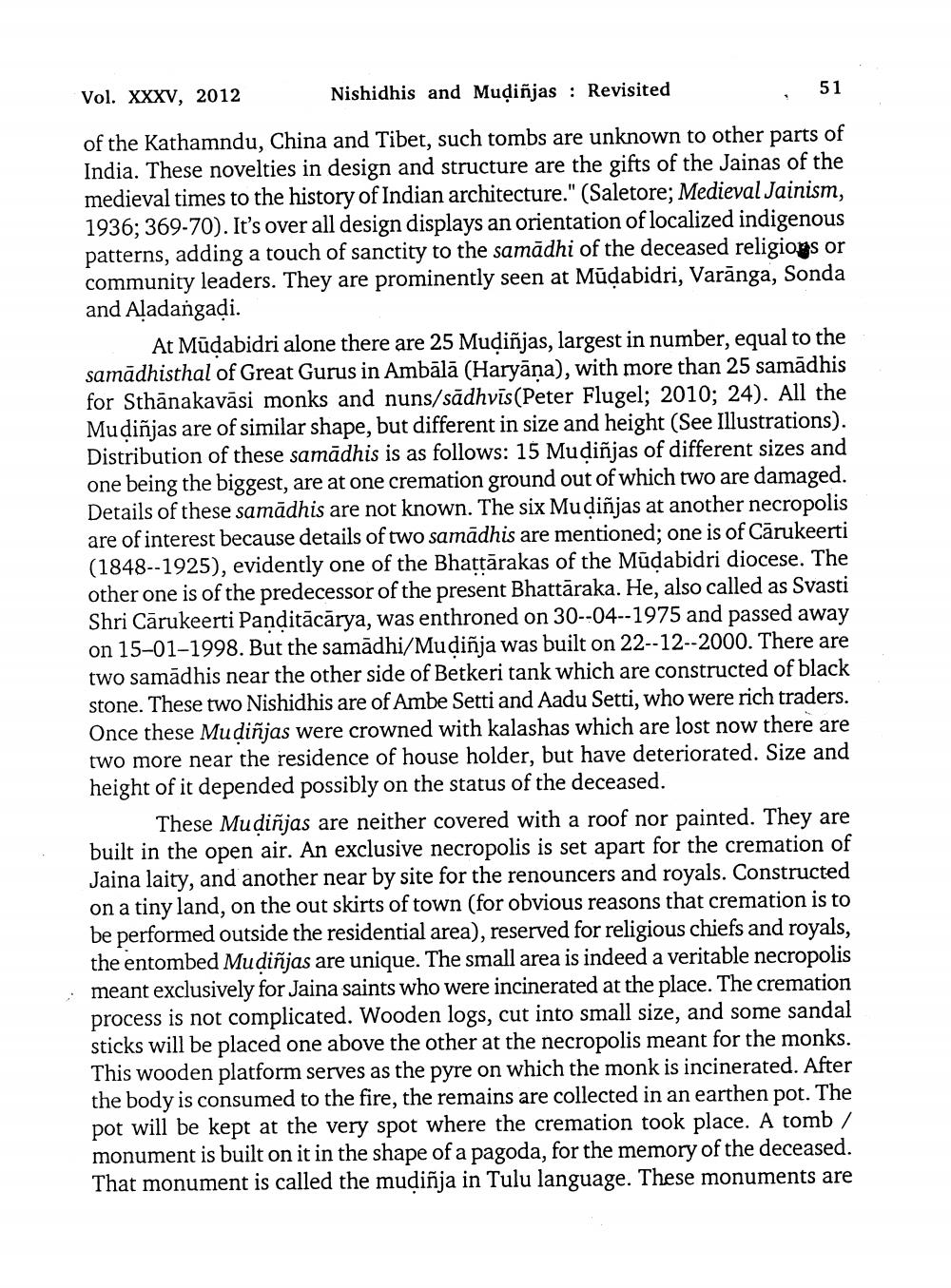________________
51
Vol. XXXV, 2012
Nishidhis and Muḍiñjas Revisited
of the Kathamndu, China and Tibet, such tombs are unknown to other parts of India. These novelties in design and structure are the gifts of the Jainas of the medieval times to the history of Indian architecture." (Saletore; Medieval Jainism, 1936; 369-70). It's over all design displays an orientation of localized indigenous patterns, adding a touch of sanctity to the samadhi of the deceased religious or community leaders. They are prominently seen at Mudabidri, Varanga, Sonda and Aladangaḍi.
At Mudabidri alone there are 25 Muḍiñjas, largest in number, equal to the samādhisthal of Great Gurus in Ambālā (Haryāṇa), with more than 25 samādhis for Sthanakavāsi monks and nuns/sādhvis (Peter Flugel; 2010; 24). All the Mudiñjas are of similar shape, but different in size and height (See Illustrations). Distribution of these samādhis is as follows: 15 Mudiñjas of different sizes and one being the biggest, are at one cremation ground out of which two are damaged. Details of these samādhis are not known. The six Mudiñjas at another necropolis are of interest because details of two samadhis are mentioned; one is of Carukeerti (1848--1925), evidently one of the Bhattarakas of the Mudabidri diocese. The other one is of the predecessor of the present Bhattaraka. He, also called as Svasti Shri Carukeerti Panditācārya, was enthroned on 30--04--1975 and passed away on 15-01-1998. But the samadhi/Muḍiñja was built on 22--12--2000. There are two samādhis near the other side of Betkeri tank which are constructed of black stone. These two Nishidhis are of Ambe Setti and Aadu Setti, who were rich traders. Once these Muḍiñjas were crowned with kalashas which are lost now there are two more near the residence of house holder, but have deteriorated. Size and height of it depended possibly on the status of the deceased.
These Muḍiñjas are neither covered with a roof nor painted. They are built in the open air. An exclusive necropolis is set apart for the cremation of Jaina laity, and another near by site for the renouncers and royals. Constructed on a tiny land, on the out skirts of town (for obvious reasons that cremation is to be performed outside the residential area), reserved for religious chiefs and royals, the entombed Muḍiñjas are unique. The small area is indeed a veritable necropolis meant exclusively for Jaina saints who were incinerated at the place. The cremation process is not complicated. Wooden logs, cut into small size, and some sandal sticks will be placed one above the other at the necropolis meant for the monks. This wooden platform serves as the pyre on which the monk is incinerated. After the body is consumed to the fire, the remains are collected in an earthen pot. The pot will be kept at the very spot where the cremation took place. A tomb / monument is built on it in the shape of a pagoda, for the memory of the deceased. That monument is called the mudiñja in Tulu language. These monuments are




